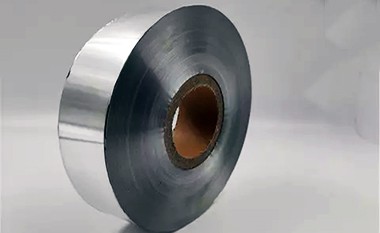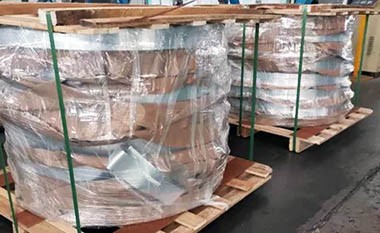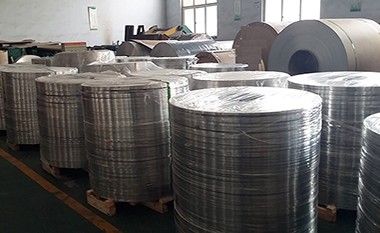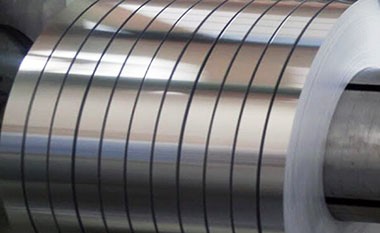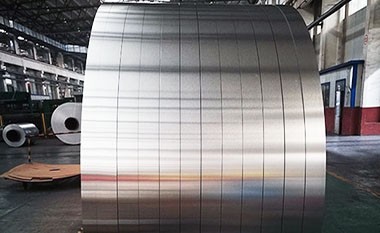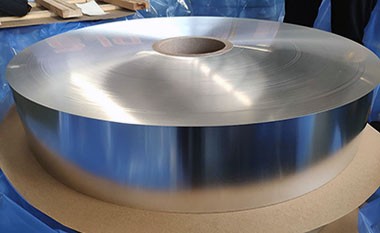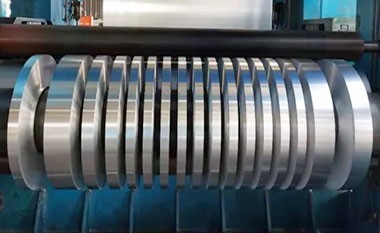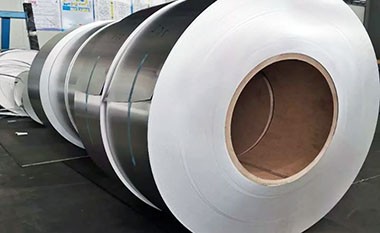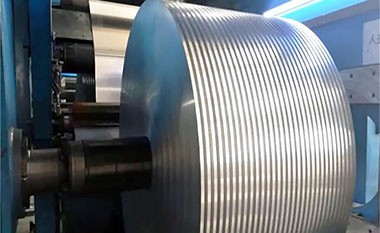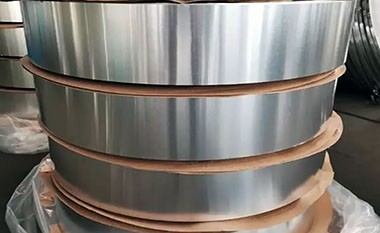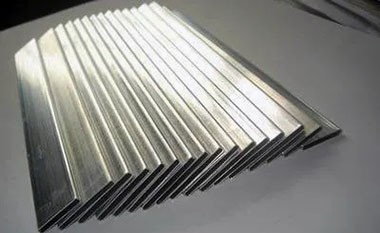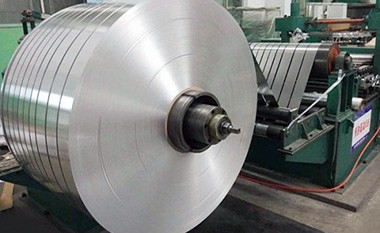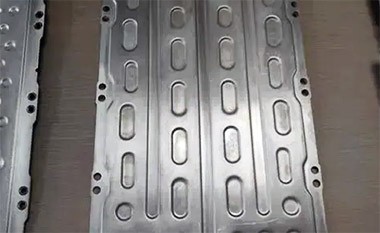Brazed aluminum fins for radiator heat exchangers in cooling systems
Brazed aluminum fins are heat dissipation components where aluminum fins are connected to the base material (typically aluminum or copper) using the brazing process. Brazing is a joining method that uses a molten filler metal (brazing alloy) to join materials at a temperature lower than the melting point of the base material, providing strong bonding and excellent corrosion resistance.
Brazed aluminum fins are widely used in cooling systems, radiators, and heat exchangers as an efficient heat dissipation solution. They are commonly applied in automotive, air conditioning, industrial cooling, and electronic devices. Brazing technology offers high strength, good corrosion resistance, and excellent thermal conductivity, making aluminum fins an ideal material for heat dissipation.
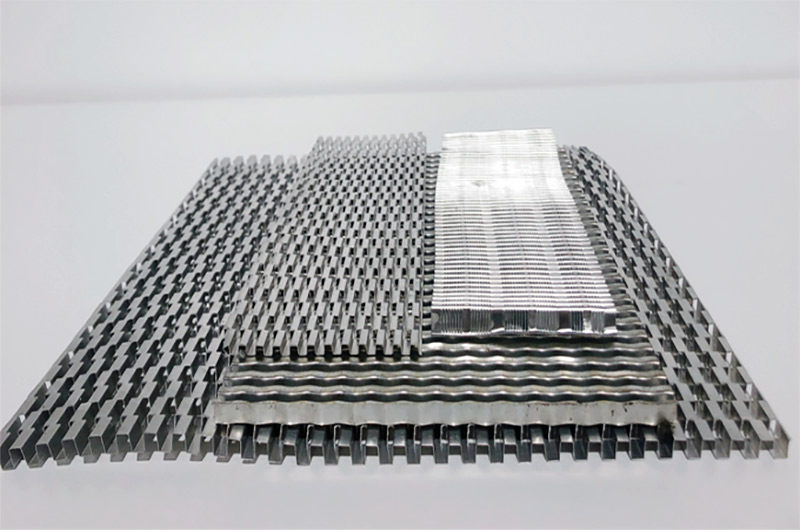
Brazed aluminum fins are created by using a brazing alloy (usually an aluminum alloy) as a filler metal between the aluminum alloy fins and the substrate material. This forms a stable bond. The brazing process typically takes place at high temperatures, where the filler metal melts and penetrates the joint between the aluminum base material, creating a strong welded structure. The process is controlled by adjusting the temperature and time to ensure a tight bond between the fins and the base material, while preventing overheating and deformation of the aluminum material.
| Type: | Brazing Aluminum Radiator Heat Exchanger Fins For Cooling System | Keyword: | Heat Exchanger Fins |
| Technical: | Brazing | Alloy: | 3003 |
| Temper: | O, H14/H16 | Size: | Customized As Your Request |
| Shape: | Customized As Your Request | Surface: | Mill Finished |
| Radiator Core Type: | Plain Folded Fin | Radiator Type: | Direct-flow |
Brazed Aluminum Fins Specification
| Item | Brazing Aluminum Radiator Heat Exchanger Fins For Cooling System |
| Dimension | as your design |
| Grade | 3003 |
| Temper | O-H112 |
| Application | condenser, evaporator, oil cooler, heater coil, car radiator |
| Aluminum Fin Type | Square wavy fin, serrated fin, louvered fin, straight fin, V wavy fin, |
Brazed Aluminum Fins Core Material
| Alloy | Si | Fe | Cu | Mn | Mg | Zn | Zr | Ti | code |
| 3003 | 0.6 | 0.7 | 0.05-0.20 | 1.0-1.5 | - | 0.1 | 0.05 | 0.03 | 1 |
| 3003+1%Zn | 0.6 | 0.7 | 0.05-0.20 | 1.0-1.5 | - | 0.5-1.50 | 0.05 | 0.05 | 2 |
| 3003+1.5%Zn | 0.6 | 0.7 | 0.05-0.20 | 1.0-1.5 | - | 1.0-2.0 | 0.05 | 0.05 | 3 |
| 3003+1.5%Zn+Zr | 0.5-1.0 | 0.7 | 0.05-0.20 | 1.0-1.6 | - | 1.0-2.0 | 0.05-0.2 | - | 4 |
| 3003+0.5%Cu | 0.6 | 0.7 | 0.30-0.70 | 1.0-1.5 | - | 0.10 | 0.05 | 0.1 | 5 |
| 3005 | 0.6 | 0.7 | 0.20-0.40 | 1.0-1.5 | 0.20-0.60 | 0.25 | - | 0.01 | 6 |
HC Aluminum's aluminum heat exchanger products include aluminum fins, aluminum cooling plates for electric vehicles, extruded aluminum microchannel cooling tubes, and aluminum heat dissipation fins for radiators. If you need aluminum fins or brazed aluminum materials, please feel free to contact us.
All of HC Aluminum's cooling new energy radiator fins (custom oil/air/cooling radiator fins) are made according to your specifications. In addition, we also offer design package services.
Fins are the essential components of plate-fin heat exchangers, and heat transfer relies entirely on the fins. There are various forms of fins, such as: straight fins, perforated fins, offset fins, louvered fins, and corrugated fins, which can meet various requirements.
Features of Brazed Aluminum Fins
- Excellent Thermal Conductivity: Aluminum fins have low thermal resistance, allowing for rapid heat transfer and enhancing heat dissipation efficiency.
- High Strength and Corrosion Resistance: Brazed aluminum fins form a strong bond after welding, ensuring the durability of the radiator. The aluminum material itself has excellent oxidation resistance, effectively preventing corrosion and extending the service life.
- Lightweight: Aluminum material is low in density and lightweight, making aluminum fins an ideal solution for lightweight heat dissipation.
- Cost-Effective: Aluminum alloys are relatively inexpensive, and the brazing process is efficient, making this technology cost-effective.
- Strong Adaptability: Brazed aluminum fins are suitable for various operating environments, including high temperatures, low temperatures, and humid conditions.
Design and Structure of Brazed Aluminum Fins
- Fin Shape: The shape of the fins can be customized according to application needs, such as flat fins, spiral fins, and corrugated fins. The most common is flat fins, which have a larger surface area to enhance heat exchange efficiency.
- Fin Spacing and Thickness: The spacing and thickness of the fins directly affect heat dissipation performance. Smaller fin spacing and thinner fins help increase the heat exchange area but need to balance the airflow resistance.
- Base Design: The base material is generally aluminum alloy and can be in a flat plate or tubular structure, joined to the fins by brazing. The base usually comes into close contact with the coolant or air channels to enhance heat transfer efficiency.
Applications of Brazed Aluminum Fins
Brazed aluminum fins are widely used in cooling systems and heat exchangers that require efficient heat dissipation.
- Automotive Cooling Systems: Such as engine radiators, air conditioning condensers, liquid cooling systems, etc. Brazed aluminum fins improve heat exchange efficiency, reduce engine overheating, and enhance air conditioning system energy efficiency.
- Industrial Heat Exchangers: Such as air conditioning systems, compressor radiators, industrial cooling equipment, etc. Brazed aluminum fins enhance the cooling capacity of the system by increasing the heat exchange area, ensuring efficient operation of equipment.
- Electronic Product Heat Sinks: Such as power electronic devices, LED lighting, server heat dissipation, etc. Aluminum fins help devices effectively dissipate heat and prevent overheating that could lead to failure.
- Aerospace Cooling Systems: In spacecraft and aircraft thermal management systems, brazed aluminum fins are commonly used for cooling components due to their high heat exchange efficiency and lightweight properties.
Manufacturing Process of Brazed Aluminum Fins
- Preparation of Fins and Base: The aluminum alloy fins and base materials are cut, stamped, or rolled into shape according to design requirements. The surfaces of the fins and base must be cleaned, with the oxide layer removed, to ensure weld quality.
- Brazing Process: The fins and base are placed in a brazing furnace, where the temperature (typically 570-600°C) and time are carefully controlled, and the appropriate brazing alloy is used. The brazing alloy melts and forms a strong joint, ensuring a secure bond between the fins and base.
- Post-Processing: After brazing, the components are cooled and inspected to ensure the welding quality meets standards. Surface treatments, such as anodizing, may also be performed to enhance corrosion resistance.
Maybe also you like:

